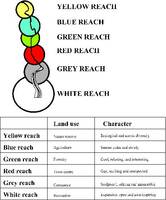- England
- Scotland
- France
- Holland
- Germany
- Italy
- Spain
- Portugal
- USA
- China
- Japan
- India
- Iran
- Advice
- Gardens
- England
- Scotland
- France
- Holland
- Germany
- Italy
- Spain
- Portugal
- USA
- China
- Japan
- India
- Iran
- Advice
- Garden Tours
Book: Landscape Planning and Environmental Impact Design: from EIA to EID
Chapter: Chapter 9 River engineering, channelization and floods
Rivers can do more than carry water.
The 1969-79 Reuss Valley Improvement Scheme is a good example a multiï¾purpose river planning project. It is in Switzerland, which, compared to many countries, has more democracy and less technocracy. The Reuss Valley lies outside Zurich between the Jura and the Alps. In 1953 a new dam was thought necessary to deal with the ancient flood problem but the project was delayed by a clash of interests between agriculture, flood protection and nature conservation. No scheme was agreed until 1969. The Reuss Act provided that 'Consideration shall be given to the requirements of landscape protection, the water system, hunting and fishing. The scenic character of the area shall be conserved as much as possible. The cantonal executive shall issue landscape design plans after hearing the communal councils, the committees of the land improvement coï¾operatives and the nature and landscape conservation agencies'. Plans were produced for farming, reafforestation, nature conservation, building and recreation. By 1979 the following sums had been spent: 80m francs on agriculture, 62m francs on a power station, 44m francs on flood protection, and 10m francs on landscape and nature conservation (Executive Council of the Canton of Aargau 1979). It is significant that a wide range of community groups and design professions were involved in the scheme. Local democracy works. The Reuss scheme illustrates the principle of multi-purpose planning. The widest-possible range of public goods should be obtained for a given level of public expenditure. McHarg described this principle as that of obtaining: "the maximum social benefit and the minimum social cost" (Mcharg 1970: 32). This requires the integration of professional disciplines under local democratic control. It contrasts with the normal situation where a "lead profession" has responsibility for interpreting unnecessarily centralised government regulations, producing a paucity of public goods. The change from single-purpose to multi-purpose river management requires the preparation of landscape plans. Some reaches of a river may be fully multi-purpose. In other reaches, there is likely to be an emphasis on habitat creation or scenic quality or fishing or water quality or something else. As with open space planning (page...) colours can be used to symbolise the intended character of different reaches of a river [Fig 9.11]. 9.11 Colours can be used to symbolise proposed riparian character

